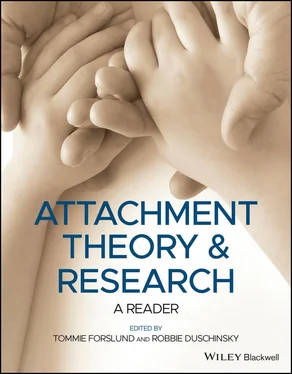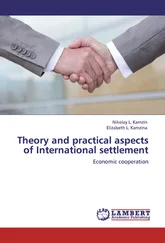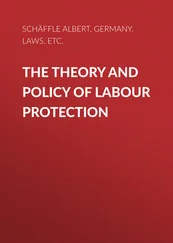Applied in the context of the theory of homeostasis now proposed this means that, whenever a person is focussing attention on the source of some homeostatic disturbance (or the threat of it) and on how to avoid it, what he feels is best termed ‘fear’ or ‘alarm’; and that, whenever a person is focussing attention on restoring homeostasis and the difficulties of doing so, what he feels is best termed ‘anxiety’. Whilst it is evident that both types of feeling can be present together, not infrequently one or the other predominates. The belief that in the two situations there is a real distinction in feeling is supported by the fact that the terms proposed have roots the meaning of which shade in two quite different directions. Thus, the English word ‘fear’ has cousins in old high German and old Norse with meanings that indicate ‘ambush’ and ‘plague’; whilst alarm derives from sixteenth century Italian meaning ‘to arms’ and implies, therefore, ‘surprise attack’ (Onions, 1966). 16 By contrast, ‘anxiety’ has cousins in Greek and Latin in meanings that center on grief and ‘sadness’; and is related to the German ‘Angst’ that, in addition to signifying dread, could in the seventeenth century also mean ‘longing’. In addition ‘anxiety’ has as further cousins both ‘anguish’ and ‘anger’ (Lewis, 1967). 17 Insofar as separation from an attachment figure is accompanied by anxiety and often also by anger, and loss by anguish and despair, the usage is in keeping with its historical roots. It is also in keeping with Freud’s belief that ‘missing someone who is loved and longed for…’ is ‘…the key to an understanding of anxiety.’ 18
Inter‐relations of Fear (or Alarm) and Anxiety
Although reasonably distinct in tone, those feelings termed respectively ‘alarm’ and ‘anxiety’ are nonetheless linked with one another in a very intimate way. A number of studies show clearly that the way children and animals behave toward mildly frightening objects varies greatly in differing social conditions.
It seems likely that comparable experiments would show similar results in adult humans (though I have not read of any). Walking through a wood at night with and without companions would be an appropriate type of test.
There is, of course, good reasons why in a group living species of animal should be more wary when isolated than when with its conspecifics. For in such species, when a predator threatens, the safety of every animal turns on the defensive efforts, either of all of them, or of the adult males together.
It is no accident that being together with ‘kith and kin’ buys relief from fear and anxiety, and engenders a feeling of security. Here again the etymology of words habitually in use, namely ‘security’ and ‘safety’, is revealing and stem from the Latin ‘salvus’ (Onions, 1966). 19
The word ‘safe’ refers to absence of injury. As such it is appropriately used to describe a situation in which injury is highly improbable. The word ‘security’, on the other hand, has a very different origin. It incorporates the Latin se and cura and refers to a feeling of not being burdened by cares or grief. As such it is appropriately used to denote a feeling of being unthreatened. 20
Now it is already evident that to feel fear or anxiety is only indirectly correlated with actual danger. In the same way, to feel secure is only indirectly correlated with actual safety. Thus members of a family may feel relatively secure when they are together, even if danger threatens; whilst conversely, each one alone might feel anxious even in the absence of any danger. Loneliness, like ‘conscience doth make cowards of us all’. 21
It is now possible, perhaps, to see some of the pitfalls that beset anyone in trying to formulate theories concerning fear (or alarm), anxiety, and feelings of security and of the situations that give rise to such feelings. First, there is a problem of distinguishing between avoiding a disturbance to homeostasis, on the one hand, and restoring homeostasis after it has been disturbed, on the other. Secondly, there is the fact that fear (or alarm) is frequently elicited, not by actual danger but by indicators only loosely correlated with actual danger. Thirdly, there is the fact that two of the most basic variables that determine whether fear or anxiety is experienced, and if so how intensely, namely strangeness versus familiarity and isolation versus companionship, tend to be highly idiosyncratic for each individual. So long as threats are public and common to all – an earthquake, a bellowing bull, a rifle pointed at someone – it is easy to classify them as ‘real’, evident, and verifiable. When, by contrast, there is threat or disturbance to someone’s personal environment and to his stability within it – isolation, the possibility of home being demolished, uncertainty whether parents will remain together – the fear and anxiety generated are not to be regarded as ‘unreal’ or unverifiable or at the least exaggerated. What naturally engender fear or anxiety, does not always fall within what is conventionally regarded as ‘reasonable’.
In the usage proposed, which is only tentative, the term ‘ecology’ refers to those characteristics of the environment to which all members of a species (or at least of one sex) respond more or less similarly, e.g. air or water, gradients of temperature and light. By contrast, the term ‘personal environment’ refers to those special characteristics of the ecologically preferred environment to which members of a species respond in distinctive ways, notably other individuals of the species and home‐ranges, such as [illeg.]
(As a term, personal environment is cumbersome and will probably need to be replaced. We might consider ‘wicology’ for the science, which would give wicological homeostasis. This derives from a root giving a number of words in the northern European languages (Wic, Wik, Wijk) and of which ‘bailiwick’ is an derivative. They all refer to a [illeg.] or a district and are usually equivalent to a home‐range. It is of some interest that both ‘eco’ as in ecology and ‘wico’ as suggested here are related to the Greek oikos (= house).
[ Bowlby’s pagination suggests that three manuscript pages are missing, or were not written ]
It is when he feels secure that he can explore the merits of alternative working models and compare the extent to which these models fit with his experience and the models he has been using hitherto.
Whereas the revision of working models tends always to be resisted and therefore to be achieved only with difficulty, their conscious elaboration may be accepted fairly readily. Science is a social process whereby extensions of working models can come to be agreed; whilst in a scientific community an agreed change of working model can occur, it usually entails long and often heated debate.
Two sciences have been concerned with the phenomena of personal environmental homeostasis: they are ethology, notably the work on imprinting, and the objects‐relations approach within psychoanalysis, notably the views advanced by Fairbairn. In neither case, however, have workers invoked homeostatic principles to interpret the phenomena studied.
Fear and Anxiety, Conscious and Unconscious
In the account of fear and anxiety sketched several elements are distinguished. They can be arranged in two sequences according to whether disturbance of homeostasis is appraised as actual or only threatened. Because threats of disturbance are much commoner than actual disturbance, and also as a rule precede actual disturbance, the sequence resulting from threat is presented first.
1 Disturbance appraised as threatened
1 Statistical likelihood of disturbance occurring in any of several categories of homeostasis, the likelihood in each case being detectable either from stimuli arising from the actual presence of a potential stressor or from stimuli arising from an indicator correlated with a probable presence of a potential stressor;
Читать дальше












